




Whether escaping the bustle of daily life with a beloved classic or discovering new worlds with the less familiar, come share the extraordinary this season with The Cleveland Orchestra .
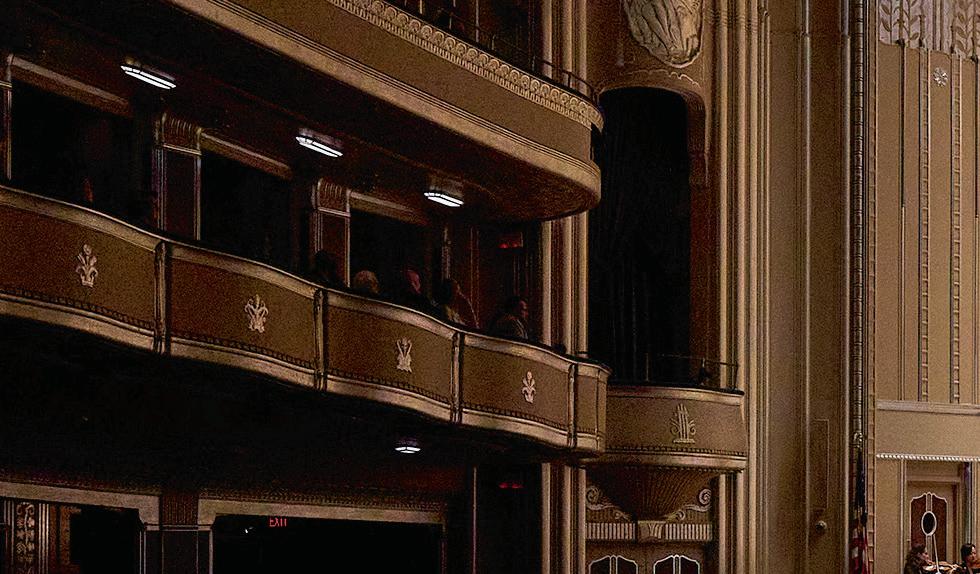

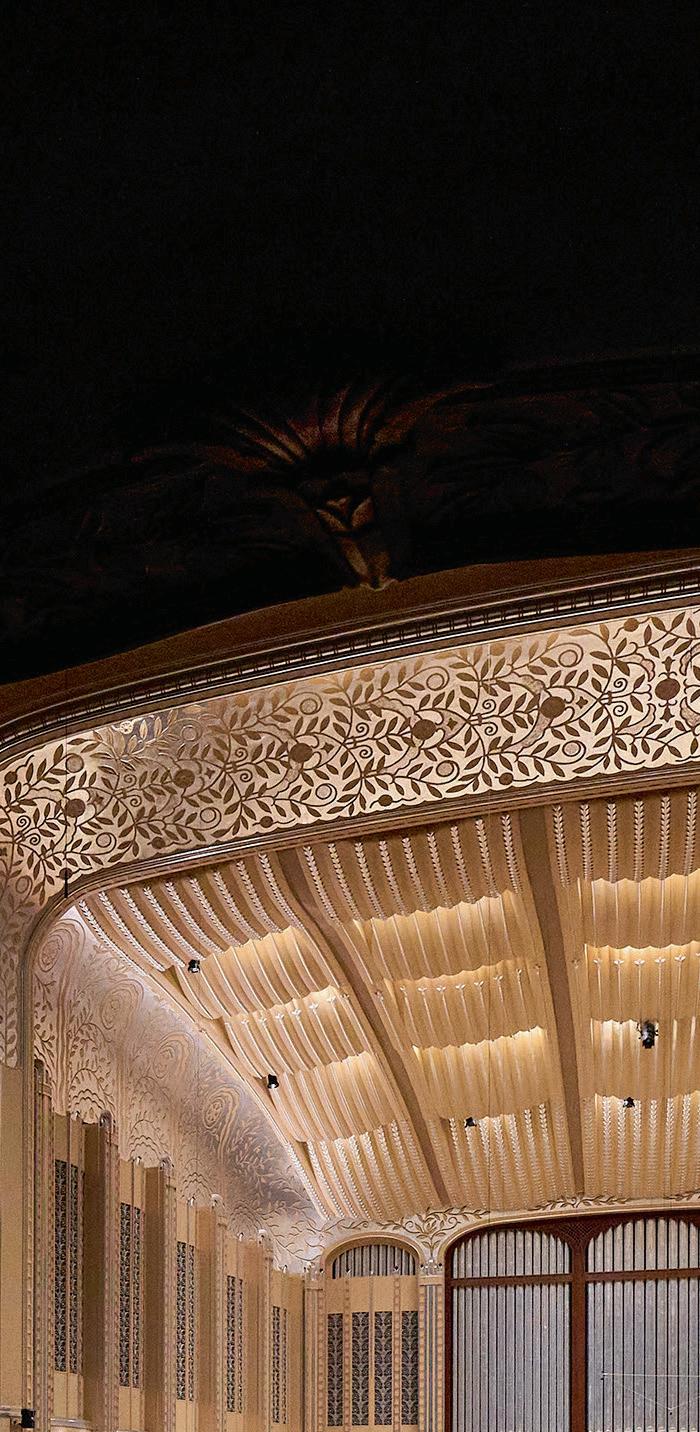

When you subscribe, you provide vital support to your Cleveland Orchestra and enjoy these exclusive benefits:
• The best seats at the best prices
• Free and easy ticket exchanges
•Purchase your parking in advance
• 20% off additional ticket purchases
• 10% off at The Cleveland Orchestra Store
•Money back guarantee
clevelandorchestra.com

JACK, JOSEPH AND MORTON MANDEL CONCERT HALL AT SEVERANCE MUSIC CENTER
Thursday, April 11, 2024, at 7:30 PM
Friday, April 12, 2024, at 11 AM
Saturday, April 13, 2024, at 8 PM
Klaus Mäkelä, conductor
Jimmy López Bellido (b. 1978)
Edward Elgar (1857–1934)
William Walton (1902–1983)
* William Walton’s Belshazzar’s Feast does not appear on Friday’s program, which will be performed without intermission.
Sol Gabetta’s performance is generously sponsored by Mrs. Rebecca F. Dunn.
Thursday’s performance is dedicated to Tony and Diane Wynshaw-Boris in recognition of their generous support of music.
Perú negro
Cello Concerto in E minor, Op. 85
I. Adagio — Moderato —
II. Lento — Allegro molto
III. Adagio —
IV. Allegro — Moderato — Allegro, ma non troppo — Poco più lento — Adagio
Sol Gabetta, cello
INTERMISSION
Belshazzar’s Feast *
Thus spake Isaiah —
By the waters of Babylon —
Babylon was a great city —
In Babylon Belshazzar the King —
Praise ye the God of Gold —
Thus in Babylon, the mighty city —
And in that same hour —
Then sing aloud to God our strength —
The trumpeters and pipers —
Then sing aloud to God our strength
Thomas Hampson, baritone
The Cleveland Orchestra Chorus
15 minutes
30 minutes
20 minutes
35 minutes
Total approximate running time: 1 hour 40 minutes
Thank you for silencing your electronic devices.




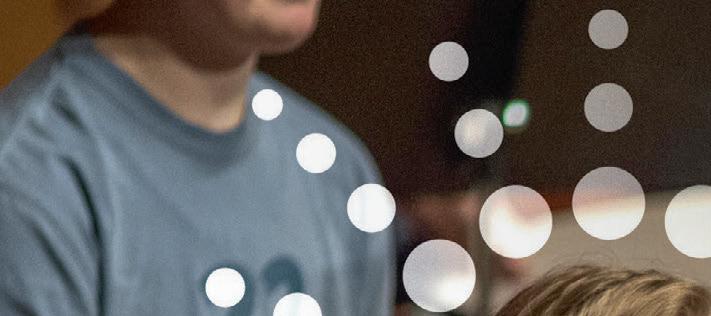

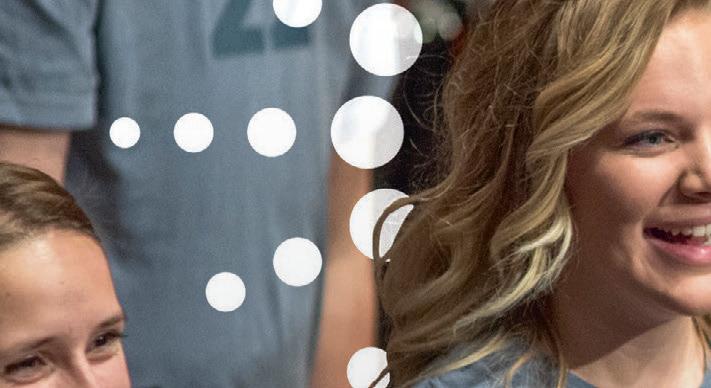
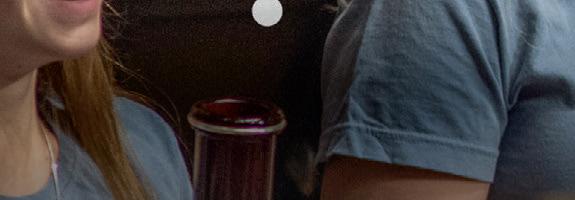


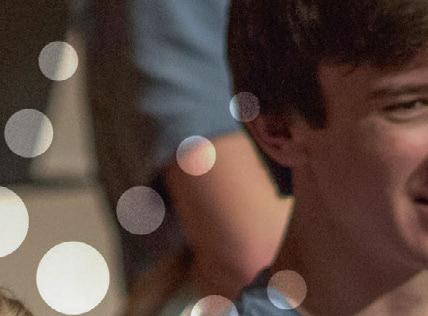








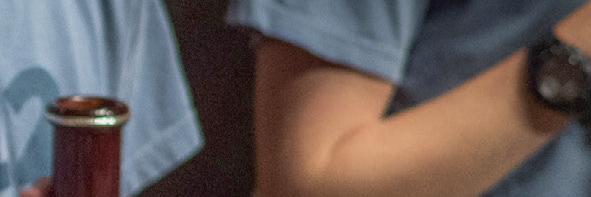




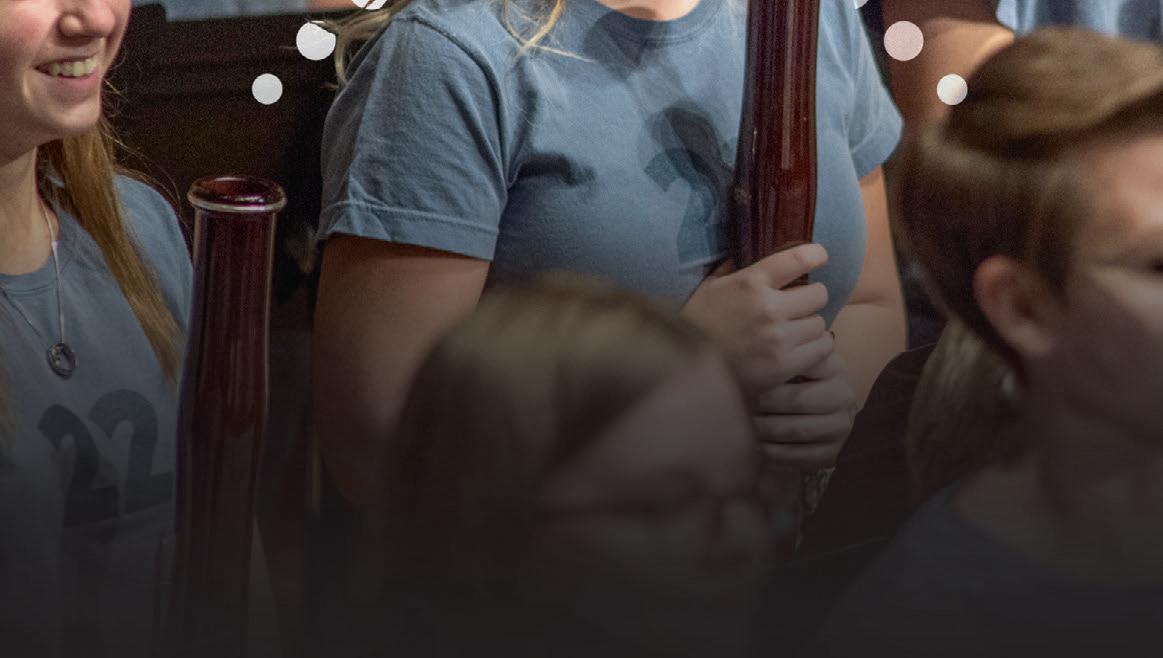







EDWARD ELGAR AND WILLIAM WALTON MET ONLY ONCE — in the gentlemen’s restroom during a 1929 concert where, according to Walton, they exchanged nothing more than “gruff pleasantries.” Perhaps such a chilly reception between two of England’s most prominent composers was inevitable, given their lives and music are a study in contrasts.
/ JOHNElgar was the last of the Edwardian romantics, a provincial composer who didn’t achieve fame until age 42 with his tender-hearted Enigma Variations, while Walton was hailed an enfant terrible at just 21 following the scandalous premiere of his jazz-fueled Façade. On the continuum of English music, the pair represent a major changing of the guard — from impassioned romanticism to riotous modernism — as displayed in their works featured on this weekend’s concerts. Written in 1918–19 as the final embers of World War I turned to ash, Elgar’s Cello Concerto showcases the composer’s lean, reflective late style, amplified by a monochromatic orchestral palette and a strong vein of melancholy. A far cry from the nostalgia of Elgar’s concerto, Walton’s Belshazzar’s Feast, completed in 1931, is set ablaze with cinematic colors, its titanic orchestra and choir evoking the Biblical tale of the doomed Babylonian King with music veering between blistering sorrow and unbridled celebration.
The luminous orchestral details and rhythmic frenzy of Walton’s grand oratorio find contemporary counterparts in Jimmy López Bellido’s Perú negro, a work championed by returning guest conductor Klaus Mäkelä. Inspired by Afro-Peruvian music, Perú negro employs six traditional folk songs as the launching point for a kaleidoscopic journey that, according to López, doesn’t aim to reproduce Peruvian folklore, but instead creates “an invented folklore of sorts, which bears the seal of my musical language.” — Michael Cirigliano II
EARN POINTS
•Attend concerts
•Watch videos
•Answer quizzes
•Give feedback
GET REWARDS
•Seat upgrades
•Exclusive content
• FREE season of Adella with 3000 Rewards points
• VIP experiences and more
JOIN NOW

Already a member?
Log in to your account at my.clevelandorchestra.com and click “Rewards” in the menu.
CLEVELANDORCHESTRA.COM/REWARDS
216-231-1111
THE PLACE FOR FANS OF THE CLEVELAND ORCHESTRA




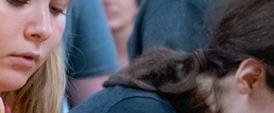





BORN : October 21, 1978, in Lima, Peru
▶ COMPOSED: 2012
▶ WORLD PREMIERE: May 17, 2013, with the Fort Worth Symphony Orchestra conducted by Miguel Harth-Bedoya
▶ This weekend’s performances mark the first presentations of Jimmy López Bellido’s Perú negro by The Cleveland Orchestra.
▶ ORCHESTRATION: 3 flutes (2nd and 3rd doubling piccolo), 3 oboes (3rd doubling English horn), 3 clarinets (3rd doubling bass clarinet), 3 bassoons (3rd doubling contrabassoon), 4 horns, 3 trumpets, 3 trombones, tuba, timpani, percussion (cajóns, cowbells, ratchet, suspended cymbal, tam-tam, toms, cabasa, jawbone, mark tree, vibraslap, bass drum, temple blocks, thunder sheet, triangles), harp, and strings
▶ DURATION: about 15 minutes
JIMMY LÓPEZ BELLIDO has an origin many of us no doubt can relate to: the reluctant young piano student. Then, at age 11, he had a momentous encounter with the music of J.S. Bach. “His Two-Part Invention No. 13 struck me like lightning!” the Lima, Peru-born composer said in a 2023 interview for the Birdsong podcast. “Through him, I discovered the world of classical music, which elicited something in me akin to religious ecstasy,” López recalled. “I have strived to produce that same kind of response [in] my listeners ever since.”
With considerable success, one hastens to add. While his best-known work is likely Bel Canto, his 2015 opera based on the Ann Patchett
novel, López’s intelligently designed, viscerally thrilling orchestral works have secured his global stature. And among his burgeoning canon of symphonic music, Perú negro has emerged as a breakout success.
Composed in 2012, the 15-minute piece was commissioned by López’s countryman and comrade, conductor Miguel Harth-Bedoya, for the Fort Worth Symphony Orchestra’s centennial season. López embedded the initials of the conductor’s full name into the opening horn motto: “E, B, B flat, and G, which correspond to Miguel (Mi = E) Harth (H = B natural) Bedoya (B = B flat) Gonzáles (G),” he wrote in a detailed composer’s note.
Describing Perú negro in a video posted on TikTok ahead of its 2023 UK premiere, López explained that the work has roots in a dark chapter of his homeland’s history. “This piece pays homage to Afro-Peruvian music, which actually has its origins when people from Africa were taken as slaves to Peru by the Spaniards,” he said.
“They did not have much to make music with, so they took whatever objects they found, like a cajón, which is basically a box, or the jawbone” — the latter literally a bone rattle made from a mule’s jaw. Using those modest implements, he explained, “they were able to create this music that speaks of their trials and tribulations.” But those songs also celebrated life, with joyous, infectious dance music rich in rhythmic variety and drive.
Weaving elements from six traditional songs into a sequence that grows inexorably more vivacious and powerful, López fashioned a work he likens to an Afro-Peruvian take on Ravel’s 1920 orchestral work La valse — “it’s a progression that intensifies with every single number,” he said in the video. “Pregón I,” the opening section, echoes the calls of Peruvian vendors plying their trade in the streets of Lima. The second part, “Toro Mata,” adapts a traditional ballad that opens with the same E and B heard at the work’s start: an ascending perfect fifth established as a structural device.

Strings come to the fore in the swirling, animated “Ingá,” picking up force and urgency en route to the driven “Le dije a papá” with its brilliant percussion interludes and increasingly wild flourishes. After a dramatic break, “Pregón II,” an altered version of the introduction, clears the way for a callback to “Toro Mata” and, finally, “Son de los Diablos,” a fast-paced finale that builds once again from a murmur to a roar.
Steve Smith is a journalist, critic, and editor based in New York City. He has written about music for The New York Times and The New Yorker, and served as an editor for the Boston Globe, Time Out New York, and NPR.
BORN : June 2, 1857, in Broadheath, England
DIED: February 23, 1934, in Worcester, England
▶ COMPOSED: 1918–19
▶ WORLD PREMIERE: October 26, 1919, featuring cellist Felix Salmond and the London Symphony Orchestra, conducted by the composer
▶ CLEVELAND ORCHESTRA PREMIERE: February 24, 1967, with soloist Jacqueline du Pré and conductor Louis Lane
▶ ORCHESTRATION: 2 flutes (2nd doubling piccolo), 2 oboes, 2 clarinets, 2 bassoons, 4 horns, 2 trumpets, 3 trombones, tuba, timpani, and strings
▶ DURATION: about 30 minutes
ONLY FOR 20 of his 76 years did Edward Elgar enjoy the simultaneous benefits of fame and creative abundance. He achieved that fame at age 42 with the premiere of his immensely popular Enigma Variations. The work that closed this two-decade period of high creativity was the Cello Concerto, completed in summer 1919. A year later, with the death of his beloved wife, Alice, Elgar withdrew more and more from public life and wrote no more masterpieces.
Elgar did not match the English people’s notion of a typical composer — expected in those days to be urbane, an aesthete, someone who clearly recognized and understood the beauty of art and could expound about it in the manner of Oscar Wilde. Elgar was largely self-taught and grew up far
from the cultural hub of London. Until the success of Enigma Variations, he was regarded as a provincial composer, which indeed he was, composing mostly for regional festivals that flourished across the countryside in late Victorian England. Then the great works appeared in steady succession — The Dream of Gerontius, Sea Pictures, the Pomp and Circumstance marches, the First Symphony, the Violin Concerto, the list goes on.
In 1917, Elgars moved to Brinkwells, a house in Sussex, which brought him respite from the constant anxieties of World War I and is readily associated with the leaner, more reflective musical style encompassed by the Cello Concerto. A letter written at this time describes his routine:

“I rise about 7 work till 8:15 — then dress, breakfast — pipe (I smoke again all day!) work till 12:30 lunch (pipe) — rest an hour — work till tea (pipe) — then work till 7:30 — change, dinner at 8. Bed at 10 — every day practically goes thus … We go for lovely walks … the woods are full of flowers, wonderful …”
On September 26, 1918, with the war still raging, Alice Elgar’s diary recorded “wonderful new music, real wood sounds & other lament [which should] be in a war symphony.” But this was to be a concerto, not a symphony, and as it neared completion the following summer, Elgar described it as “a real large work & I think good & alive.”
The Cello Concerto was completed in July 1919 and premiered on October 26 in the Queen’s Hall, London, with Felix Salmond as the soloist and Elgar conducting the London Symphony Orchestra. (In the cello section of the orchestra was future conductor John Barbirolli, then age 19, who would conduct a historic recording of the work with Jacqueline du Pré.) That first night was marred by too little rehearsal time. Music critic Ernest Newman reported that the orchestra “made a lamentable
public exhibition of itself.” The work later came to be recognized as one of the supreme concertos for cello.
A sentiment of resignation and even of despair in the Cello Concerto may be generated both internally by a strong vein of melancholy that is an inescapable element of Elgar’s music and externally by the desolating impact of the Great War. But the work is not an elegy, nor even, so far as we can tell, a deliberately planned swan song. It is reflective, playful, tearful, and energetic by turns, like all Elgar’s best music.
in his sketchbook: “very full, sweet and sonorous,” and although the whole orchestra tries to give it breadth, it ends as it began, bleak and bare.
The scherzo second movement that follows is in 4/4 time with bustling sixteenth notes reminiscent of Elgar’s Introduction and Allegro for strings of many years earlier. There is a brief expressive phrase offered here and there in contrast, but lightness prevails.
[The] work is not an elegy. ... It is reflective, playful, tearful, and energetic by turns, like all Elgar’s best music.
Unlike a traditional concerto, this one has four movements, not three. The movements are all concise, and the two central movements, a scherzo and a slow movement, offer a complete contrast in momentum and temper. The declamatory opening of the work recurs, though truncated, at the beginning of the scherzo and in full, with marvelously valedictory effect, in the finale. After a dramatic entrance for the soloist, the first movement’s gentle lilt is far removed from any pomp or circumstance. Over the meandering first theme Elgar wrote
For the work’s third, slow movement, Elgar indulges unashamedly in the yearning phrases and sliding harmony that breathe nostalgia and tranquility. This is not a lament but a private world of sweetness so direct and complete that it requires no development or expansion. For all its heartrending beauty, the movement is short, and its halfclose leads directly into the finale fourth movement.
Here, after another declamatory start, the music settles into a sturdy rhythm that proceeds in a businesslike and oddly impersonal fashion right through to the closing pages. Then, as if yielding to some fatal destiny, Elgar adds an epilogue in slow tempo as passionate as anything he ever wrote. There is asperity too, in the harmony, and the music slides inevitably into a brief memory of the slow movement, followed by the work’s opening statement and a brief energetic (and surely ironic in intention) close.
—Hugh MacdonaldHugh Macdonald is Avis H. Blewett Professor Emeritus of Music at Washington University in St. Louis. He has written books on Beethoven, Berlioz, Bizet, and Scriabin, as well as Music in 1853: The Biography of a Year





BORN : March 29, 1902, in Oldham, England
DIED: March 8, 1983, in Ischia, Italy
▶ COMPOSED: 1930–31
▶ WORLD PREMIERE: October 8, 1931, in Leeds, with baritone Dennis Noble, the London Symphony Orchestra, the Leeds Festival Chorus, and Malcolm Sargent conducting
▶ CLEVELAND ORCHESTRA PREMIERE: December 14, 1961, conducted by Robert Shaw and featuring baritone Ara Berberian and The Cleveland Orchestra Chorus
▶ ORCHESTRATION: 2 flutes, piccolo, 2 oboes, 3 clarinets, alto saxophone, 2 bassoons, contrabassoon, 4 horns, 3 trumpets, 3 trombones, tuba, timpani, percussion (xylophone, glockenspiel, triangle, castanets, tambourine, gong, field drum, tenor drum, woodblock, cymbals, bass drum, whip, anvil), 2 harps, piano, organ, and strings, plus 2 brass bands, baritone, and chorus
▶ DURATION: about 35 minutes
See page 16 for the sung texts.
CORPORATION (BBC) commissioned a new choral work from William Walton in 1929, the programmer provided specific parameters to accommodate the intimacy of the BBC studios. The composition was to employ a small choir, one vocal soloist, and no more than 15 orchestral musicians — modest guidelines the young English composer obliterated in epic fashion.
The completed score Walton submitted for Belshazzar’s Feast revealed a sprawling oratorio for baritone soloist, double choir, and a massive orchestra requiring two brass bands, a convoy
of colorful percussion, military band instruments such as alto saxophone, and both piano and organ. The new work proved so expansive that its 1931 premiere was transferred to the Leeds Festival, where the London Symphony Orchestra and the festival’s large amateur choir filled the vast environs of the 1,500-seat Leeds Town Hall.
Delivering an unconventional work that ignored established guidelines was the latest display of cheek from the precocious Walton, who by the time

of the BBC commission had been considered the enfant terrible of English music in the decade following World War I.He achieved notoriety in 1923 for his cabaret-style collaboration with the writer Edith Sitwell, Façade: An Entertainment, and his 1929 Viola Concerto, which displayed Walton’s avant-garde approach to working with classical forms.
Not yet 30, Walton now had the chance to make his mark on the English choral tradition — one he knew well from his chorister days as a teenager
holy golden vessels plundered from the First Temple in Jerusalem to praise his pagan gods. As 1,000 guests drink from these sacred cups, a mysterious hand writes a message on the palace wall foretelling doom for the king. Belshazzar, refusing to repent for his actions, is killed that night, and the enslaved Israelites celebrate their newfound freedom.
Composing a work of this vast scale and musical complexity — one teeming with constant meter changes, dissonant
[In Belshazzar’s Feast], Walton walked a path inspired by his two primary influences: the kaleidoscopic orchestral writing of Stravinsky, Debussy, and Ravel — and the driving, jagged pulse of jazz.
at Oxford’s Christ Church Cathedral School, where he sang the oratorios of Handel, J.S. Bach, and Mendelssohn. But the composer’s first major choral work didn’t use any of those revered works as a blueprint. Instead, Walton walked a path inspired by his two primary influences: the kaleidoscopic orchestral writing of Stravinsky, Debussy, and Ravel — and the driving, jagged pulse of jazz.
For the oratorio’s text, Walton used a libretto Edith Sitwell’s brother Osbert had assembled for the occasion — a collection of passages drawn from the Old Testament depicting a lavish feast of the Babylonian King Belshazzar, who blasphemes during the event by using
harmonies, and shocking syncopations — was a monumental undertaking for Walton, whose perfectionism often got in the way of his becoming a more prolific composer. (When sketching the section in which the king and his subjects extol their gods, Walton spent seven months frozen in place, obsessing over how to set the word “gold.”) Adding to these challenges was the fact that Belshazzar’s Feast forced Walton to break new ground in his vocal writing. Although he had previously set to music Edith Sitwell’s abstract poetry in Façade, those words were recited through a megaphone from behind a decorative screen, a performance technique more akin to the radical theater of Bertolt
Brecht than the sacred reverence of Bach’s passions.
Despite needing to apply a more traditional approach to text setting, Walton engineers an innovative architecture for his oratorio. Rather than advancing the storytelling through a series of distinct movements alternating among solo arias, orchestral interludes, and large choral numbers, as composers of earlier centuries had done, Walton casts Belshazzar’s Feast in three major sections united as one continuous movement of sweeping music that offers a cinematic realization of the Biblical scene.
A blast of trombones establishes the opening’s mournful mood, as a chorus of exiled Israelites lament their imprisonment and loss of their homeland. A shadowy theme emerges in the depths of the orchestra and icy dissonances abound as the choir sings of their weeping by the shores of Babylon, asking “How shall we sing the Lord’s song in a strange land?” The solo baritone enters, and in declamatory style portrays the decadence of Babylon through the “merchandise” in which the city trades — from precious stones and marble to fine linens, gold, and most chillingly, “the souls of men.”
Spiky, angular themes begin darting across the orchestra like lightning bolts as Walton plunges us directly into Belshazzar’s bacchanal. The choir recounts the opulent celebration, during which the king calls for the golden vessels of Jerusalem so that his princes, wives, and concubines can celebrate
their pagan gods, each one evoked in a dazzling feat of Walton’s orchestration: The metallic twinkling of glockenspiel, flutes, and piccolo praise the God of Silver; anvil strikes pay tribute to the God of Iron; and in honor of the God of Brass, the brass bands volley a series of pompous military fanfares. The cataclysm of sound intensifies throughout the roll call of praise, reaching its peak as the chorus erupts over ominous chords from brass and organ: “O King, live forever!”
Then — silence. Against a spinetingling assortment of hushed cymbal strokes, trembling strings, and the death rattle of castanets, the baritone recounts the surreal sight of a floating hand writing on the palace wall behind the king. “Mene, mene, tekel upharsin” (Thou art weighed in the balance and found wanting), the message reveals before the soloist announces Belshazzar’s death, punctuated by a thunderclap from the chorus with the shouted word “Slain!” Babylon has fallen, and the Israelites celebrate freedom in a final chorale of unquenchable joy. The music races forward with relentless fervor into a series of high-voltage climaxes as the choir invites one and all to “Make a joyful noise to the God of Jacob … Alleluia!”
Michael Cirigliano II is a freelance writer who has worked with The Cleveland Orchestra, Oregon Symphony, Los Angeles Philharmonic, Minnesota Orchestra, Lincoln Center, and the Metropolitan Museum of Art. His newsletter, Shades of Blue, explores the human stories behind classical music’s most melancholy moments as a means to cultivate calm, connection, and healing.
Words selected from Biblical sources by Osbert Sitwell and reprinted by permission of Oxford University Press
CHORUS
Thus spake Isaiah: Thy sons that thou shalt beget, they shall be taken away and be eunuchs in the palace of the King of Babylon. Howl ye, howl ye, therefore: For the day of the Lord is at hand!
By the waters of Babylon, there we sat down: yea, we wept and hanged our harps upon the willows.
For they that wasted us required of us mirth; they that carried us away captive required of us a song.
“Sing us one of the songs of Zion.” How shall we sing the Lord’s song in a strange land?
BARITONE AND CHORUS
If I forget thee, O Jerusalem, let my right hand forget her cunning. If I do not remember thee, let my tongue cleave to the roof of my mouth;
yea, if I prefer not Jerusalem above my chief joy.
CHORUS
By the waters of Babylon, there we sat down: yea, we wept.
O daughter of Babylon, who art to be destroyed, happy shall he be that taketh thy children and dasheth them against a stone. For with violence shall that great city Babylon be thrown down, and shall be found no more at all.
Babylon was a great city, her merchandise was of gold and silver, of precious stones, of pearls, of fine linen, of purple, silk and scarlet, all manner vessels of ivory, all manner vessels of most precious wood, of brass, iron and marble, cinnamon, odors and ointments, of frankincense, wine and oil, fine flour, wheat and beasts, sheep, horses, chariots, slaves, and the souls of men.
CHORUS
In Babylon Belshazzar the King made a great feast, made a feast to a thousand of his lords, and drank wine before the thousand.
Belshazzar, whiles he tasted the wine, commanded us to bring the gold and silver vessels: Yea! the golden vessels, which his father, Nebuchadnezzar, had taken out of the temple that was in Jerusalem.
He commanded us to bring the golden vessels of the temple of the house of God, that the King, his Princes, his wives, and his concubines might drink therein.
Then the King commanded us: “Bring ye the cornet, flute, sackbut, psaltery, and all kinds of music.”
They drank wine again, Yea! drank from the sacred vessels. And then spake the King:
BARITONE AND CHORUS
“Praise ye the God of Gold.
Praise ye the God of Silver.
Praise ye the God of Iron.
Praise ye the God of Wood.
Praise ye the God of Stone.
Praise ye the God of Brass.
Praise ye the Gods!”
CHORUS
Thus in Babylon, the mighty city, Belshazzar the King made a great feast, made a feast to a thousand of his lords and drank wine before the thousand.
Belshazzar, whiles he tasted the wine, commanded us to bring the gold and silver vessels that his Princes, his wives and his concubines might rejoice and drink therein.
After they had praised their strange gods, the idols and devils, false gods who can neither see nor hear, called they for the timbrel and the pleasant harp to extol the glory of the King. Then they pledged the King before the people, crying, “Thou, O King, art King of Kings: O King, live forever.”
CONTINUED ON NEXT PAGE
CONTINUED ▶ ▶ ▶
BARITONE
And in that same hour, as they feasted, came forth fingers of a man’s hand and the King saw the part of the hand that wrote.
And this was the writing that was written:
MENE, MENE, TEKEL, UPHARSIN.
CHORUS
THOU ART WEIGHED IN THE BALANCE AND FOUND WANTING.
BARITONE
In that night was Belshazzar the King slain,
CHORUS Slain!
BARITONE and his kingdom divided.
CHORUS
Then sing aloud to God our strength: Make a joyful noise unto the God of Jacob.
Take a psalm, bring hither the timbrel. Blow up the trumpet in the new moon, blow up the trumpet in Zion, for Babylon the Great is fallen. Alleluia!
Then sing aloud to God our strength: Make a joyful noise unto the God of Jacob, while the Kings of the Earth lament and the merchants of the Earth weep, wail and rend their raiment. They cry, “Alas, Alas, that great city, in one hour is her judgment come.”
The trumpeters and pipers are silent, and the harpers have ceased to harp, and the light of a candle shall shine no more.
Then sing aloud to God our strength: Make a joyful noise to the God of Jacob. For Babylon the Great is fallen. Alleluia!





Klaus Mäkelä has held the position of chief conductor of the Oslo Philharmonic since 2020 and music director of the Orchestre de Paris since 2021. As artistic partner to the Concertgebouworkest since 2022, he will assume the title of chief conductor in 2027. An exclusive Decca Classics artist, he recorded the Sibelius symphonies with the Oslo Philharmonic and Stravinsky’s The Firebird and The Rite of Spring with the Orchestre de Paris.
Following residencies with the Oslo Philharmonic at the Edinburgh and Lucerne festivals, Mäkelä opened his fourth season as chief conductor with Thomas Larcher’s Symphony No. 2 and Mahler’s Symphony No. 4. The 2023–24 season includes 17 concerts at home in Norway, a three-week tour of Asia, and guest performances in Hamburg, Amsterdam, Paris, and Vienna.
With the Orchestre de Paris, Mäkelä performed Stravinsky’s Ballet Russes at the Festival d’Aix-en-Provence in collaboration with three filmmakers and recorded Stravinsky’s Petrushka and works by Debussy for Decca Classics. Additional highlights include world premieres by Unsuk Chin and Anna Thorvaldsdottir and appearances by several pianists including Bertrand Chamayou, Leif Ove Andsnes, and Daniil Trifonov
Mäkelä often compares programming concerts to curating exhibitions. He takes this literally with one of the programs he leads in his second season as artistic
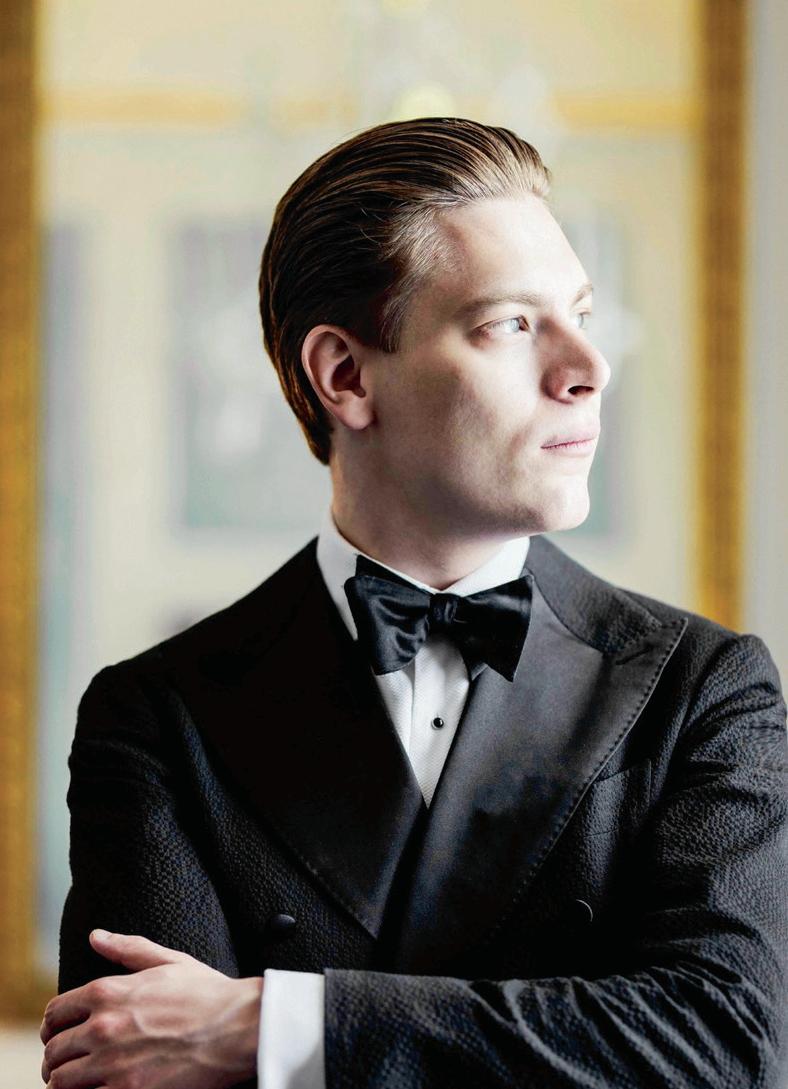
partner to the Concertgebouworkest, pairing Mussorgsky’s Pictures at an Exhibition with Falla’s Nights in the Gardens of Spain and Hawar Tawfiq’s M.C. Escher’s Imagination. Additional programs pair Mozart’s Clarinet Concerto with works by Betsy Jolas and Thomas Larcher, and Beethoven’s Symphony No. 3 with music by Fanny and Felix Mendelssohn. Mäkelä also leads the orchestra in Bruckner’s Symphony No. 5 as part of a complete cycle celebrating the 200th anniversary of the composer’s birth.
Mäkelä guest conducts three orchestras in the 2023–24 season, returning to the US to lead The Cleveland Orchestra and Chicago Symphony Orchestra and to Germany for three performances with the Munich Philharmonic.
As a cellist, Mäkelä partners with members of the Oslo Philharmonic, Orchestre de Paris, and Concertgebouworkest for occasional programs and each summer performs at the Verbier Festival in chamber music concerts with fellow artists.
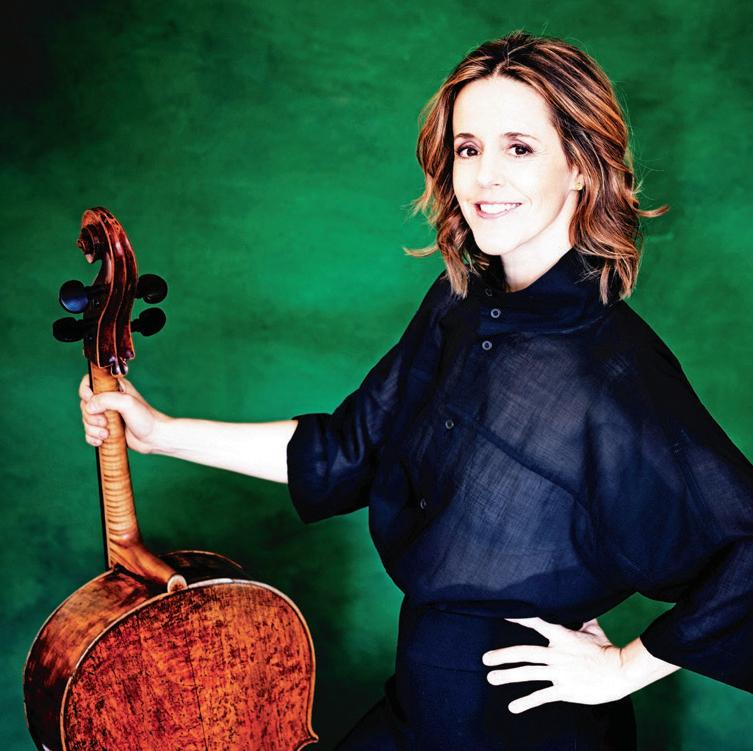
Following her residencies with the Staatskapelle Dresden and Bamberg Symphony, cellist Sol Gabetta opened the 2023–24 season with a tour of Germany and Austria with the Orchestre Philharmonique de Radio France and Mikko Franck. Other season highlights include a tour with with Paavo Järvi and the Estonian Festival Orchestra, appearances with the Wiener Philharmoniker at Mozartwoche Salzburg, and performances with The Cleveland Orchestra, New York Philharmonic, Gewandhausorchester, and violinist Patricia Kopatchinskaja.
A respected advocate of new compositions for her instrument, Gabetta gave the world premiere at Radio France of Francisco Coll’s Cello Concerto, created especially for her. Gabetta reprises this concerto at the BBC Proms with the BBC Symphony Orchestra and Elim Chan.
Gabetta was Artiste étoile at the Lucerne
Festival and continues drawing inspiration from a wide circle of collaborators at the Solsberg Festival, which flourishes under her committed artistic direction.
Chamber music is at the core of Gabetta’s work. Past chamber music performances have led her to venues such as Lincoln Center, Wigmore Hall, and the Verbier and Salzburg festivals. Recent recitals include a tour with her longtime recital partner, pianist Bertrand Chamayou, through Germany, the Netherlands, the UK, Spain, and Italy.
In recognition of her exceptional artistic achievements, Gabetta was honored with the European Culture Prize in 2022. She also received the Herbert von Karajan Prize in 2018 and the first OPUS Klassik Award for Instrumentalist of the Year in 2019. A Grammy Award nominee, she also received Gramophone’s Young Artist of the Year Award in 2010 and commendations at Moscow’s Tchaikovsky Competition.
Gabetta continues to build her extensive discography with Sony Classical, the most recent releases being a recording of late works by Robert Schumann and cello concertos by Elgar and Martinů with the Berliner Philharmoniker.
Gabetta performs on several instruments from the early 18th century, including a cello by Matteo Goffriller from 1730, provided to her by Atelier Cels Paris, and since 2020, the famous “Bonamy Dobree-Suggia” by Antonio Stradivarius from 1717, on generous loan from the Stradivari Foundation Habisreutinger. She has taught at the Basel Music Academy since 2005.
Long recognized as one of the most innovative musicians of our time, American baritone Thomas Hampson has received countless international honors for his singular artistry and cultural leadership. His operatic repertoire is comprised of more than 80 roles, and his discography includes more than 170 albums, with multiple nominations and winners of the Grammy Award, Edison Award, and the Grand Prix du Disque.
Hampson’s 2023–24 season includes Walton’s Belshazzar’s Feast with The Cleveland Orchestra, Mahler’s Das Lied von der Erde with the Stuttgarter Philharmoniker, the New Year’s Eve Gala at the Wiener Konzerthaus, and a European tour with the Dallas Symphony Orchestra and Fabio Luisi. He also performs recitals in Kronberg, Krün, and Heidelberg, and returns for the sixth edition of Schubert Week at the Pierre Boulez Saal.
Last season, Hampson made his highly anticipated debut as Richard Nixon in John Adams’s Nixon in China at the Opéra national de Paris, led by Gustavo Dudamel. Hampson also starred as Creonte in a concert version of Haydn’s L’anima del filosofo, ossia Orfeo ed Euridice at the Salzburg Festival. In addition, he appeared with the New Century Chamber Orchestra, joined Martha Argerich at the KKL Luzern, and performed with Klaus Mäkelä and
the BBC Symphony Orchestra at the BBC Proms.
Hampson led several masterclasses throughout the season, including the third edition of the Internationale Opernwerkstatt Waiblingen, Heidelberger Frühling’s 2023 Liedfestival, and at the second edition of Opera for Peace’s 2023 Academy in Paris.
Hampson is an honorary professor of philosophy at the University of Heidelberg and an honorary member of London’s Royal Academy of Music. In addition to several honorary doctorates, he is the Kammersänger of the Wiener Staatsoper and Commandeur de l’Ordre des Arts et des Lettres of the Republic of France. In 2017 he received the Hugo Wolf Medal, together with Wolfram Rieger. He is the co-founder and artistic director of the Lied Academy Heidelberg and, in 2003, he founded the Hampsong Foundation, which uses the art of song to promote intercultural dialog and understanding. Additionally, he serves as an advisor for Opera for Peace.


Now in its 72nd season, The Cleveland Orchestra Chorus is one of the few professionally trained, all-volunteer choruses sponsored by a major American orchestra.
Since its founding in 1952 at the request of George Szell, nearly 3,000 singers, chosen through audition, have joined the Chorus. The group has appeared in over 1,300 concerts with The Cleveland Orchestra, including 27 appearances at New York’s Carnegie Hall, along with tour performances in Miami, Puerto Rico, and across Europe. They have been heard on hundreds of radio broadcasts, appeared in at least a dozen television programs, and participated in more than 30 commercial recordings with The Cleveland Orchestra. More recently, the Chorus has created 11 Christmas albums with The Cleveland Orchestra, proceeds from which help defray the cost of touring and operating the Chorus.
Current Chorus members hail from nearly 50 Northeast Ohio communities (and one Pennsylvania community). Together, the group’s 130 members volunteer more than 30,000 hours annually in rehearsals and performances. They also raise money for their tours through a variety of projects and events. Current members have service tenures ranging from 6 months to 50 years, with a combined 1,261 years of service to the ensemble.
On March 5, 2020, The Cleveland Orchestra Chorus was awarded The Cleveland Orchestra’s Distinguished Service Award. The annual award was established in 1996 by the Orchestra’s Board of Trustees to recognize ongoing and exceptional commitment and service to the Orchestra. The Chorus was recognized first as individuals, for their extraordinary commitment and dedication as volunteers, and second, for the collective and polished artistry they achieve each season as a group.
Auditions are currently being scheduled for the 2024–25 season. Visit cochorus.com for details.
♦ 15–24 years of service
♦ ♦ 25–34 years of service
♦ ♦ ♦ 35–44 years of service
♦ ♦ ♦ ♦ 45+ years of service
SOPRANOS
Amy Foster Babinski ♦
Claudia Barriga
Yu Ching Ruby Chen
Amanda Cobes
Susan Cucuzza ♦
Caitlin DiFranco
Maddie Dirrim
Emily Engle
Molly Falasco
Lisa Fedorovich
Arianna Fouch
Samantha Garner
AJ Gauger*
Jennifer Gilles
Sarah Gould ♦
Julia Halamek
Rebecca S. Hall ♦
Sarah Henley
Lisa Hrusovsky ♦ ♦
Rachel Imhoff
Amber Jackson
Shannon R. Jakubczak
Katie Kitchen*
Hope Klassen-Kay ♦
EvaCecilia Koh
Adrienne Leska
Kate Macy ♦ ♦
Gracie Mino^
Clare Mitchell
Julie Myers-Pruchenski
S. Mikhaila Noble-Pace
Jennifer Heinert O’Leary ♦
Katie Paskey
Victoria Peacock
Elizabeth Phillips
Grace Prentice
Jylian Purtee
Lisa M. Ramsey
Cara Rovella
Emma Russell
Martell Savage
Katie Schick
Anya Smith^
Ellie Smith
Megan Tettau
Angel Victoria Tyler
Meagan Ulery
Cassie Utt
Liz Wakelin
Sharilee Walker ♦ ♦
ALTOS
Emily Austin ♦ ♦
Laurel Babcock
Debbie Bates
Riley Beistel
Carla Cashman
Annie Cohen
Bridget Corcoran
Carolyn Dessin ♦ ♦
Amber Dimoff
Brooke Emmel
Megan Fought
Karen S. Hunt ♦
Sarah Hutchins
Maggie Keverline
Rebecca King
Kristi Krueger
Zoe Kuhn
Ada Lapham^
Elise Leitzel
Taylor Mills Logan
Danielle S. McDonald ♦
Karla McMullen
Holly Miller
Bri Mosley^
Peggy A. Norman ♦ ♦
Dawn Ostrowski
Ellie Petro
Andrea Pintabona
Ina Stanek-Michaelis ♦ ♦
Melanie Tabak
Shawna Taylor
Rachel Thibo
Kristen Tobey
Martha Cochran Truby ♦
Laure Wasserbauer ♦ ♦
Hannah Wells^
Caroline Willoughby
Leah Wilson
Jennifer R. Woda
Debra Yasinow ♦ ♦
Lynne Leutenberg Yulish
TENORS
Richard Hall
John-Joseph Haney*
Daniel M. Katz ♦ ♦
Peter Kvidera ♦
Adam Landry
Ben Low^
Christian L. Maric
David McCallum
Matthew Rizer ♦
Ted Rodenborn
Jacob Rumelfanger
Nathan A. Russell
John Sabol ♦
Julio Santana
Andrew Stamp
Allen White
Ethan Yoder*
BASSES
Craig Astler
Jack Blazey ♦
Ronnie Boscarello
Matthew Britton
Sean Michael Cahill
Nick Connavino
Tyler Coy
Kyle Crowley
Tom Cucuzza
Christopher Dewald
Jeffrey Duber ♦
Andrew Fowler
Jeffrey D. Gershman
Mark Hermann
Kurtis B. Hoffman ♦
Taral K. Jella
Robert L. Jenkins III
James Johnston
Kevin Kutz
Jason Levy ♦
Jacob J. Liptow
Tyler Mason
Robert Mitchell
Tremaine Oatman ♦ ♦ ♦ ♦ 50 years!
Glenn Obergefell
Trevor Pollack
Francisco Prado
Brandon Randall
Connor Smith^
Charlie Smrekar
Charles Tobias ♦ ♦
Matt Turell
Patrick Wickliffe
Paul Zito^
Daniel Singer, Assistant Director
Daniel Overly, Collaborative Pianist
Jill Harbaugh, Director Choral Operations
Lisa Fedorovich, Chair
The Cleveland Orchestra
Chorus Operating Committee
* Shari Bierman Singer Fellow
^ Member of The College of Wooster Chorus

Lisa Wong was appointed director of choruses for The Cleveland Orchestra in May 2018 after serving as acting director throughout the 2017 – 18 season. She joined the choral staff of The Cleveland Orchestra as assistant director of choruses at the start of the 2010–11 season. In 2012, she took on added responsibilities as director of The Cleveland Orchestra Youth Chorus.
In addition to her duties at Severance, she is a faculty member at The College of Wooster. Choirs under her direction have performed at the Central Division conference of the American Choral Directors Association and the state
conference of the Ohio Music Education Association. An advocate for the music of under-represented composers, Wong serves as the Repertoire and Resource Chair for World Music and Cultures for the Ohio Choral Directors Association, as well as on the editorial board regarding culturally responsive pedagogy for the Ohio Music Education Association. Her previous academic posts include positions in public and private schools in New York, Pennsylvania, and Indiana.
Active as a clinician, guest conductor, and adjudicator, she serves as a music panelist for the National Endowment for the Arts. Recent international accolades have included work at Kenyatta University in Nairobi, Kenya, as a part of Tunaweza Kimuziki, and as a conductor for “Conducting 21C: Musical Leadership for a New Century” in Stockholm, Sweden. Wong holds a Bachelor of Science degree in music education from West Chester University, as well as Master of Music and Doctor of Music degrees in choral conducting from Indiana University.
NOW IN ITS SECOND CENTURY , The Cleveland Orchestra, under the leadership of Music Director Franz Welser-Möst since 2002, is one of the most sought-after performing ensembles in the world. Year after year, the ensemble exemplifies extraordinary artistic excellence, creative programming, and community engagement. The New York Times has called Cleveland “the best in America” for its virtuosity, elegance of sound, variety of color, and chamber-like musical cohesion.

Founded by Adella Prentiss Hughes, the Orchestra performed its inaugural concert in December 1918. By the middle of the century, decades of growth and sustained support had turned it into one of the most admired globally.
The past decade has seen an increasing number of young people attending concerts, bringing fresh attention to The Cleveland Orchestra’s legendary sound and committed programming. More recently, the Orchestra launched several bold digital projects, including the streaming platform Adella, the podcast On a Personal Note, and its own recording label, a new chapter in the Orchestra’s long and distinguished recording and broadcast history. Together, they have captured the Orchestra’s unique artistry and the musical achievements of the Welser-Möst and Cleveland Orchestra partnership.
The 2023 – 24 season marks Franz Welser-Möst’s 22nd year as music director, a period in which The Cleveland Orchestra earned unprecedented acclaim around the world, including a series of residencies at the Musikverein in Vienna, the first of its kind by an American orchestra, and a number of acclaimed opera presentations.
Since 1918, seven music directors — Nikolai Sokoloff, Artur Rodziński, Erich Leinsdorf, George Szell, Lorin Maazel, Christoph von Dohnányi, and Franz Welser-Möst — have guided and shaped the ensemble’s growth and sound. Through concerts at home and on tour, broadcasts, and a catalog of acclaimed recordings, The Cleveland Orchestra is heard today by a growing group of fans around the world.


FIRST VIOLINS
Jung-Min Amy Lee
ASSOCIATE CONCERTMASTER
Gretchen D. and Ward Smith Chair
Jessica Lee
ASSISTANT CONCERTMASTER
Clara G. and George P. Bickford Chair
Stephen Tavani
ASSISTANT CONCERTMASTER
Dr. Ronald H. Krasney Chair
Wei-Fang Gu
Drs. Paul M. and Renate H. Duchesneau Chair
Kim Gomez
Elizabeth and Leslie Kondorossy Chair
Chul-In Park
Harriet T. and David L. Simon Chair
Miho Hashizume
Theodore Rautenberg Chair
Jeanne Preucil Rose
Larry J.B. and Barbara S. Robinson Chair
Alicia Koelz
Oswald and Phyllis Lerner Gilroy Chair
Yu Yuan
Patty and John Collinson Chair
Isabel Trautwein
Trevor and Jennie Jones Chair
Katherine Bormann
Analisé Denise Kukelhan
Gladys B. Goetz Chair
Zhan Shu
Youngji Kim
Genevieve Smelser
SECOND VIOLINS
Stephen Rose*
Alfred M. and Clara T. Rankin Chair
Jason Yu2
James and Donna Reid Chair
Eli Matthews1
Patricia M. Kozerefski and Richard J. Bogomolny Chair
Sonja Braaten Molloy
Carolyn Gadiel Warner
Elayna Duitman
Ioana Missits
Jeffrey Zehngut
Sae Shiragami
Kathleen Collins
Beth Woodside
Emma Shook
Dr. Jeanette Grasselli Brown and Dr. Glenn R. Brown Chair
Yun-Ting Lee
Jiah Chung Chapdelaine
Liyuan Xie
VIOLAS
Wesley Collins*
Chaillé H. and Richard B.
Tullis Chair
Stanley Konopka2
Mark Jackobs
Jean Wall Bennett Chair
Lisa Boyko
Richard and Nancy
Sneed Chair
Richard Waugh
Lembi Veskimets
The Morgan Sisters Chair
Eliesha Nelson
Anthony and Diane Wynshaw-Boris Chair
Joanna Patterson Zakany
William Bender
Gareth Zehngut
CELLOS
Mark Kosower*
Louis D. Beaumont Chair
Richard Weiss1
The GAR Foundation Chair
Charles Bernard2
Helen Weil Ross Chair
Bryan Dumm
Muriel and Noah Butkin Chair
Tanya Ell
Thomas J. and Judith Fay
Gruber Chair
Ralph Curry
Brian Thornton
William P. Blair III Chair
David Alan Harrell
Martha Baldwin
Dane Johansen
Paul Kushious
BASSES
Maximilian Dimoff*
Clarence T. Reinberger Chair
Derek Zadinsky2
Charles Paul1
Mary E. and F. Joseph
Callahan Chair
Mark Atherton
Thomas Sperl
Henry Peyrebrune
Charles Barr Memorial Chair
Charles Carleton
Scott Dixon
HARP
Trina Struble*
Alice Chalifoux Chair
FLUTES
Joshua Smith*
Elizabeth M. and William C. Treuhaft Chair
Saeran St. Christopher
Jessica Sindell2
Austin B. and Ellen W. Chinn Chair
Mary Kay Fink
PICCOLO
Mary Kay Fink
Anne M. and M. Roger Clapp Chair
OBOES
Frank Rosenwein*
Edith S. Taplin Chair
Corbin Stair
Sharon and Yoash Wiener Chair
Jeffrey Rathbun2
Everett D. and Eugenia S.
McCurdy Chair
Robert Walters
ENGLISH HORN
Robert Walters
Samuel C. and Bernette K. Jaffe Chair
CLARINETS
Afendi Yusuf*
Robert Marcellus Chair
Robert Woolfrey
Victoire G. and Alfred M.
Rankin, Jr. Chair
Daniel McKelway2
Robert R. and Vilma L. Kohn Chair
Amy Zoloto
E-FLAT CLARINET
Daniel McKelway
Stanley L. and Eloise M.
Morgan Chair
BASS CLARINET
Amy Zoloto
Myrna and James Spira Chair
BASSOONS
John Clouser*
Louise Harkness Ingalls Chair
Gareth Thomas
Barrick Stees2
Sandra L. Haslinger Chair
Jonathan Sherwin
CONTRABASSOON
Jonathan Sherwin
HORNS
Nathaniel Silberschlag*
George Szell Memorial Chair
Michael Mayhew§
Knight Foundation Chair
Jesse McCormick
Robert B. Benyo Chair
Hans Clebsch
Richard King
Meghan Guegold Hege
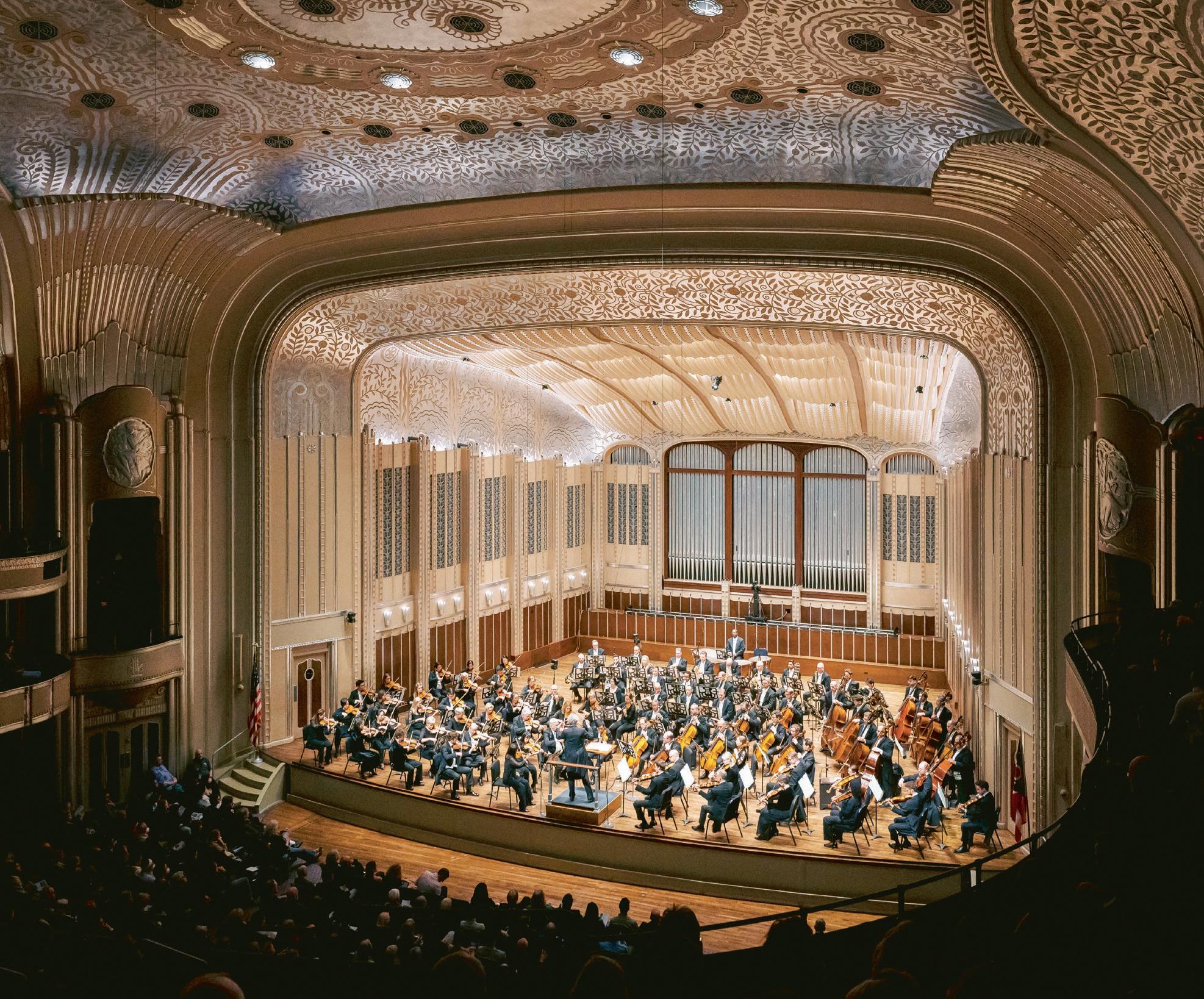
TRUMPETS
Michael Sachs*
Robert and Eunice Podis Weiskopf Chair
Jack Sutte
Lyle Steelman2
James P. and Dolores D. Storer Chair
Michael Miller
CORNETS
Michael Sachs*
Mary Elizabeth and G. Robert Klein Chair
Michael Miller
TROMBONES
Brian Wendel*
Gilbert W. and Louise I.
Humphrey Chair
Richard Stout
Alexander and Marianna C. McAfee Chair
Shachar Israel2
BASS TROMBONE
Luke Sieve
EUPHONIUM & BASS TRUMPET
Richard Stout
TUBA
Yasuhito Sugiyama*
Nathalie C. Spence and Nathalie S. Boswell Chair
TIMPANI
vacant PERCUSSION
Marc Damoulakis*
Margaret Allen Ireland Chair
Thomas Sherwood
Tanner Tanyeri
KEYBOARD INSTRUMENTS
Carolyn Gadiel Warner
Marjory and Marc L.
Swartzbaugh Chair
LIBRARIANS
Michael Ferraguto
Joe and Marlene Toot Chair
Donald Miller
Gabrielle Petek
ENDOWED CHAIRS CURRENTLY UNOCCUPIED
Elizabeth Ring and William
Gwinn Mather Chair
Blossom-Lee Chair
Virginia M. Linsdseth, PhD, Chair
Paul and Lucille Jones Chair
Charles M. and Janet G.
Kimball Chair
Sunshine Chair
Otto G. and Corinne T. Voss Chair
Mr. and Mrs. Richard K.
Smucker Chair
Rudolf Serkin Chair
CONDUCTORS
Christoph von Dohnányi
MUSIC DIRECTOR LAUREATE
Daniel Reith
ASSISTANT CONDUCTOR
Sidney and Doris Dworkin Chair
Lisa Wong
DIRECTOR OF CHORUSES
Frances P. and Chester C.
Bolton Chair
* Principal
§ Associate Principal
1 First Assistant Principal
2
Assistant Principal
This roster lists full-time members of The Cleveland Orchestra. The number and seating of musicians onstage varies depending on the piece being performed. Seating within the string sections rotates on a periodic basis.
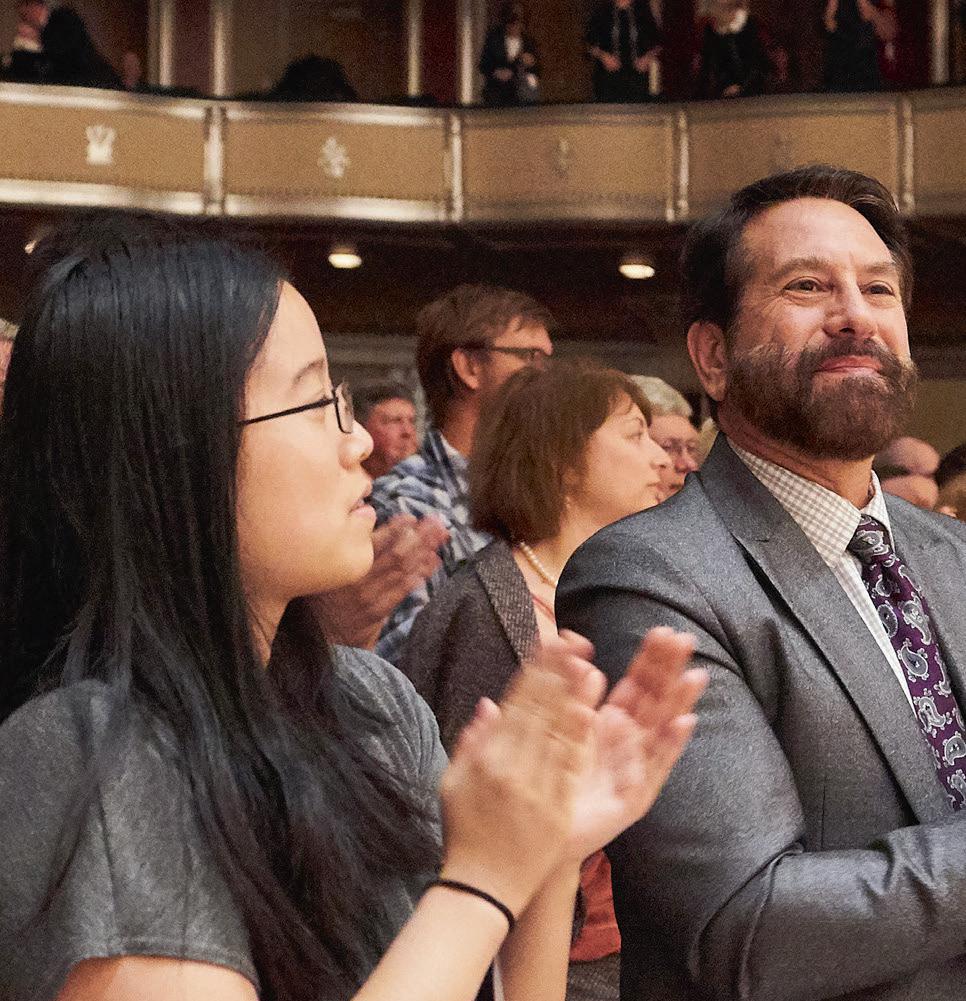

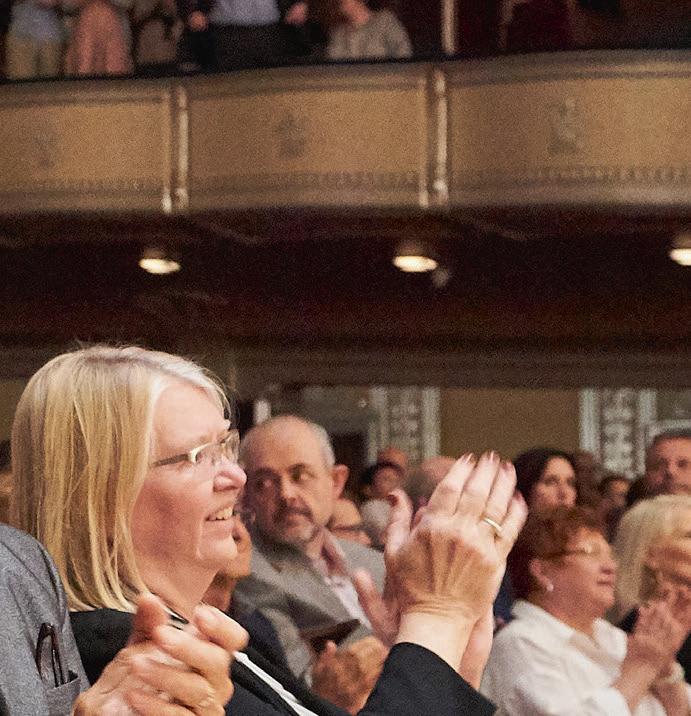







You are the magic behind every powerful performance. With this season approaching its finale, the Orchestra needs donations from friends like you to finish the year strong! Your help makes all the difference.
Be a champion for music with your donation today!

clevelandorchestra.com/give 216-456-8400
Pre-concert lectures are held in Reinberger Chamber Hall one hour prior to the performance.
SPRING
APR 14
RECITAL Schumann & Brahms
Evgeny Kissin, piano
Matthias Goerne, baritone
R. SCHUMANN Dichterliebe
BRAHMS Four Ballades, Op. 10
BRAHMS Selected Songs
APR 18 – 20
THE RITE OF SPRING
Klaus Mäkelä, conductor
Jean-Yves Thibaudet, piano
MILHAUD Le Bœuf sur le toit
GERSHWIN Concerto in F
STRAVINSKY The Rite of Spring
Pre-concert lecture by Caroline Oltmanns
APR 26 – 28
RACHMANINOFF’S SECOND PIANO
CONCERTO
David Afkham, conductor
Beatrice Rana, piano
UNSUK CHIN subito con forza
RACHMANINOFF Piano Concerto No. 2
BARTÓK Concerto for Orchestra
Pre-concert lecture by James O’Leary
MAY 2 – 4
LANG LANG PLAYS
SAINT-SAËNS
Franz Welser-Möst, conductor
Lang Lang, piano *
SAINT-SAËNS Piano Concerto No. 2 *
BERLIOZ Symphonie fantastique
Pre-concert lecture by Caroline Oltmanns
* Not performed on the Friday matinee concert
MAY 15–26
2024 MANDEL OPERA & HUMANITIES FESTIVAL
For more information on festival events visit:
clevelandorchestra.com/festival
MAY 16, 18, 24 & 26
MOZART’S MAGIC FLUTE
Franz Welser-Möst, conductor
Nikolaus Habjan, director
Julian Prégardien, tenor
Ludwig Mittelhammer, baritone
Christina Landshamer, soprano
The Cleveland Orchestra Chorus
MOZART The Magic Flute
Staged production sung in German with projected supertitles
MAY 17
CONRAD TAO IN RECITAL: POWER AND INFLUENCE
Conrad Tao, piano
Dane Johansen, cello
MAY 21
TERENCE BLANCHARD & FRIENDS: A CELEBRATION OF WAYNE SHORTER
Terence Blanchard, trumpet
Featuring the E-Collective and Turtle Island Quartet
MAY 23 & 25
MOZART’S GRAN PARTITA
Franz Welser-Möst, conductor
Leila Josefowicz, violin
WAGNER Prelude and Liebestod from Tristan und Isolde
BERG Violin Concerto
MOZART Serenade No. 10, “Gran Partita”
Pre-concert lecture by Michael Strasser
For tickets & more information visit:
clevelandorchestra.com
The Cleveland Orchestra is committed to creating a comfortable, enjoyable, and safe environment for all guests at Severance Music Center. While mask and COVID-19 vaccination are recommended they are not required. Protocols are reviewed regularly with the assistance of our Cleveland Clinic partners; for up-to-date information, visit: clevelandorchestra. com/attend/health-safety
As a courtesy to the audience members and musicians in the hall, late-arriving patrons are asked to wait quietly until the first convenient break in the program. These seating breaks are at the discretion of the House Manager in consultation with the performing artists.
As a courtesy to others, please silence all devices prior to the start of the concert.
Audio recording, photography, and videography are prohibited during performances at Severance. Photographs can only be taken when the performance is not in progress.
For the comfort of those around you, please reduce the volume on hearing aids and other devices that may produce a noise that would detract from the program. For Infrared Assistive-Listening Devices, please see the House Manager or Head Usher for more details.
Download today for instant, secure, and paperless access to your concert tickets.
For more information and direct links to download, visit clevelandorchestra.com/ticketwallet or scan the code with your smartphone camera to download the app for iPhone or Android.
Available for iOS and Android on Google Play and at the Apple App Store.
Contact an usher or a member of house staff if you require medical assistance. Emergency exits are clearly marked throughout the building. Ushers and house staff will provide instructions in the event of an emergency.
Regardless of age, each person must have a ticket and be able to sit quietly in a seat throughout the performance. Classical Season subscription concerts are not recommended for children under the age of 8. However, there are several age-appropriate series designed specifically for children and youth, including Music Explorers (for 3 to 6 years old) and Family Concerts (for ages 7 and older).
The Cleveland Orchestra is grateful to the following organizations for their ongoing generous support of The Cleveland Orchestra: the State of Ohio and Ohio Arts Council and to the residents of Cuyahoga County through Cuyahoga Arts and Culture.
Cleveland Orchestra performances are broadcast as part of regular programming on ideastream/WCLV Classical 90.3 FM, Saturdays at 8 PM and Sundays at 4 PM.
The Cleveland Orchestra is proud of its long-term partnership with Kent State University, made possible in part through generous funding from the State of Ohio. The Cleveland Orchestra is proud to have its home, Severance Music Center, located on the campus of Case Western Reserve University, with whom it has a long history of collaboration and partnership.
© 2024 The Cleveland Orchestra and the Musical Arts Association Program books for Cleveland Orchestra concerts are produced by The Cleveland Orchestra and are distributed free to attending audience members.
EDITORIAL
Kevin McBrien, Publications Manager
The Cleveland Orchestra
kmcbrien@clevelandorchestra.com
DESIGN
Elizabeth Eddins, Eddinsdesign
eddinsdesign@gmail.com
ADVERTISING
Live Publishing Company, 216-721-1800 clevelandorchestra.com

“We are paving a path for our next chapter by establishing connections now. We can keep enjoying our wonderful skyline views and musical activities, knowing our plan is in place.”
As a Judson at Home member, you’ll have access to an engaging community, cultural programs, wellness activities and an array of dining venues. Most of all, you have all the services and amenities of a retirement community at your fingertips while living in your own home.




We believe that all Cleveland youth should have access to high-quality arts education. Through the generosity of our donors, we have invested more than $12.6 million since 2016 to scale up neighborhood-based programs that serve thousands of youth year-round in music, dance, theater, photography, literary arts and curatorial mastery. That’s setting the stage for success. Find your passion, and partner with the Cleveland Foundation to make your greatest charitable impact.
(877) 554-5054
www.ClevelandFoundation.org/Success
